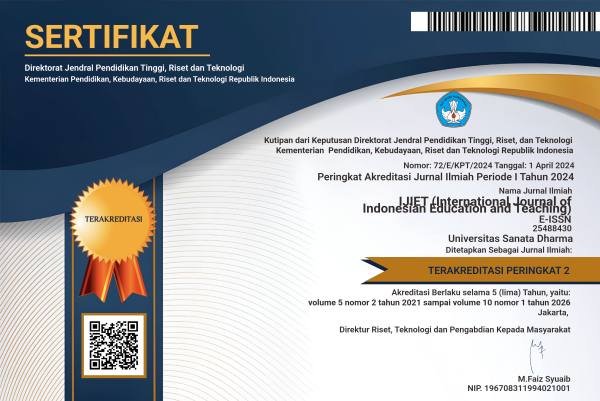CONNECTING ENGLISH LANGUAGE TEACHING WITH 12 BRAIN/MIND LEARNING PRINCIPLES
(1) Central China Normal University
(*) Corresponding Author
Abstract
On a daily basis, teachers all over the world modify their students brain when they teach the contents that the students need to learn; this biological, cognitive and behavioral process is called learning. From a biological, cognitive and educational point of view, those modifications are totally necessary for the development of the learners. One of those so called brain-modification experiences occurs when they learn English. Then, you may wonder, how could these modifications (learning) be enhanced? In order to answer this question, this paper suggests a connection between 12 brain/mind learning principles(Caine, Caine, Klimek, & McClintic, 2009) and English teaching aiming to make it more effective. The reason for this connection is that if teachers become aware of the way the brain learns, their practices may be enhanced leading to more effective teaching and learning (Geake, 2009). Thus, in order to state this connection, every principle is presented, described and followed by some general practical suggestions related to English teaching. It is necessary to mention that all the included suggestions will be simply examples; it would be then the task of the reader, the teacher or instructor, to ignite her creativity by applying the principles in her particular context to enhance her teaching practices and promote English language learning among students.
Keywords
Full Text:
PDFReferences
Blakemore, S.-J., & Frith, U. (2005). The learning brain. Lessons for education. Oxford: Blackwell.
Brown, H. D. (2000). Principles of Language learning and Teaching (4th ed.). New York: Pearson Education.
Bruer, J. T. (1997). Education and the Brain: A Bridge Too Far. Educational Researcher, 26(8), 4-16.
Bruer, J. T. (2016). Where is educational neuroscience? Educational Neuroscience, 1, 1-12.
Caine, R. N., Caine, G., Klimek, K. J., & McClintic, C. (2009). 12 Brain/Mind Learning Principles in Action. California: Corwin Press.
Celce-Murcia, M. (Ed.). (2001). Teaching English as a Second or Foreign Language (3rd ed.). Boston: Heinle & Heinle Publishers.
Erlauer, L. (2003). The Brain-Compatible Classroom Using What We Know About Learning to Improve Teaching. Alexandria: ASCD.
Geake, G. J. (2009). The Brain at School. New York: McGraw-Hill Companies.
Harmer, J. (2007b). How to Teach English: An Introduction to the Practice of English Language Teaching (2nd ed.). Essex: Pearson Education Limited.
Harmer, J. (2007b). The practice of English Language Teaching (4th ed.). Essex: Pearson Education Limited.
Hattie, J., & Yates, G. (2014). Visible Learning and the Science of How We Learn. New York: Routledge.
Hebb, D. O. (1949). The organization of behavior. New York: Wiley.
Howard-Jones, P. A. (2014a). Neuroscience and Education: A review of Educational Interventions and Approaches Informed by Neuroscience. Bristol: Education Endowment Foundation.
Howard-Jones, P. A. (2014b). Neuroscience and education: myths and messages. Nature Neuroscience, 15(12), 817-824.
Immordino-Yang, M. H., & Damasio, A. (2007). We Feel, Therefore We Learn: The Relevance of Affective and Social Neuroscience to Education. MIND, BRAIN, AND EDUCATION, 1(1), 3-10.
Jensen, E. (2008). Brain-Based Learning. Thousand Oaks: Corwin Press.
Krashen, S. D. (1982). Principles and Practice in Second Language Acquisition. Oxford: Pergamon Press.
Medina, J. (2008). Brain rules: 12 principles for surviving and thriving at work, home, and school. Seattle: Pear Press.
Richards, J. C., & Renandya, W. A. (Edits.). (2002). Methodology in Language Teaching: An Anthology of Current Practice. New York: Cambridge University Press.
Rodriguez, V., & Fitzpatrick, M. (2014). The Teaching Brain: An Evolutionary Trait at the Heart of Education. New York: The New Press.
Tokuhama-Espinosa, T. (2011). Mind, Brain and Education Science. New York: W.W. Norton & Company, Inc.
Tokuhama-Espinosa, T. (2014). Making Classrooms better: 50 practical applications of mind, brain and education science. New York: Norton.
Willis, J. (2008). How Your Child Learns Best. Naperville: Sourcebooks Inc.
Zull, J. E. (2002). The art of changing the brain. Enriching the practice of teaching by exploring the biology of learning. Virginia: Stylus Publishing, LLC.
Zull, J. E. (2011). From Brain to Mind Using Neuroscience to Guide Change in Education. Sterling: Stylus Publishing.
DOI: https://doi.org/10.24071/ijiet.v2i2.1260
Refbacks
- There are currently no refbacks.
Copyright (c) 2018 Jorge Correa Rodriguez

This work is licensed under a Creative Commons Attribution-ShareAlike 4.0 International License.
Indexed and abstracted in:
IJIET Sinta 2 Certificate (S2 = Level 2)
We would like to inform you that IJIET (International Journal of Indonesian Education and Teaching):has been nationally accredited Sinta 2 by the Ministry of Education, Culture, Research and Technology of the Republic of Indonesia based on the decree No. Surat Keputusan 158/E/KPT/2021. Validity for 5 years: Vol 5 No 2, 2021 until Vol 10 No 1, 2026.


IJIET Journal Sinta 2 Certificate
This work is licensed under CC BY-SA.
This work is licensed under a Creative Commons Attribution-ShareAlike 4.0 International License.
IJIET DOI: https://doi.org/10.24071/ijiet
p-ISSN: 2548-8422 (since 5 January 2017); e-ISSN: 2548-8430 (since 5 January 2017)
IJIET (International Journal of Indonesian Education and Teaching) is published twice a year, namely in January and July, by the Institute for Research and Community Services of Sanata Dharma University, Yogyakarta, Indonesia.
















